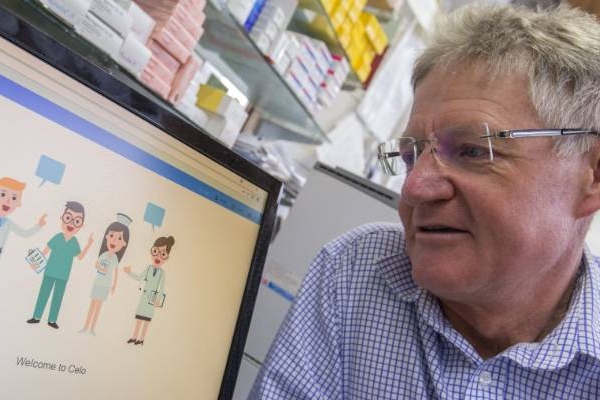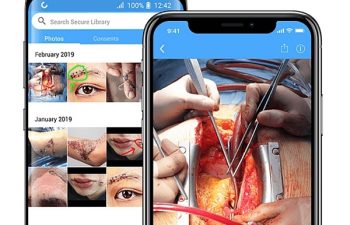Published on the 13/03/2019 | Written by Jonathan Cotton

After passing NZ trials, Celo takes secure clinical messaging to the world…
Auckland-based Celo is launching its secure, industry-compliant instant messaging service for the healthcare sector to a ready worldwide market.
The Celo system aims to replace the use of unauthorised and insecure messaging between clinicians in the healthcare sector, with the aim of reducing medical errors and patient harm that can result from undocumented information sharing.
 Available on iOS, Android and Desktop, the Celo IM app doesn’t store any patient information on the user’s device, instead sending all patient data – including clinical photographs captured from inside the Celo App – to Celo’s encrypted cloud database.
Available on iOS, Android and Desktop, the Celo IM app doesn’t store any patient information on the user’s device, instead sending all patient data – including clinical photographs captured from inside the Celo App – to Celo’s encrypted cloud database.
It’s a simple idea meeting a market apparently ripe for disruption. Currently, clinicians at hospitals and healthcare organisations use an array of consumer-grade text-messaging and instant-messaging apps, most often WhatsApp, to communicate and discuss patient details.
That stands to reason of course. Staff need a way to communicate with each other quickly and conveniently after all. Unfortunately, there’s a huge downside to such stop-gap measures. Consumer platforms can easily violate established health privacy standards, and often do, including specific privacy legislation in the US, EU, New Zealand and Australia.
“Health professionals use WhatsApp because its easy and because the alternatives are often complex and hard to use,” says Celo CEO and co-founder, Stephen Vlok.
“Celo exists because we know healthcare professionals need a safe and easy way to communicate patient information… In this day and age, it should be the expectation for both patients and their health providers that they can access their information when they need it.”
In this day and age, it should be the expectation for both patients and their health providers that they can access their information when they need it.
Vlok says that as the legislative environment continues to grow more complex, and as government and regulatory bodies focus on best-practice privacy principles, the market is open for a solution like Celo which has been designed with the industry requirements to the fore.
“There is more legislation than ever before,” says Vlok, “and honestly I think it’s well overdue. Our expansion globally reflects the need for the product worldwide… It’s about time we look after patient data properly.”
But there’s more to meeting the market than product/market fit. Vlok says it’s been a long journey raising funds and getting the product in front of health professionals poses its own challenges.
“We have had to build a software business organically in a small market,” he says. “That’s a hard thing to do in any industry but it’s even harder in the health sector with its outdated procurement models.”
The company has been working with the Canterbury District Health Board (no stranger to new tech trials), who have integrated the Celo system into its clinician’s workflow, so far with positive results.
“The important thing about the Celo application is that its completely secure,” says Stella Ward, Canterbury District Health Board chief digital officer.
“That means we’re able to protect patient information which has been traditionally secured – in some form – on paper. But as we’ve become more electronic [health professionals have started adopting] unsecured processes [for messaging]. Using a secure platform means that the information is protected, the conversation is captured and protected securely,” Ward says.
“We can now audit how the care processes work and we can provide safer care to our patients.”
Getting that industry insight continues to be a priority for the company, says Vlok.
So far the company has partnered with practise management system developer Medtech and pharmacy software provider Toniq. It is also able to integrate with New Zealand’s Electronic Health Records
 The app includes a secure in-app camera to capture and sync patient photos to the clinicians desktop or directly to the patient’s electronic medical record. Images can then be labelled and annotated with relevant information such as Patient ID to enhance clinical decision making, or to ensure more complete documentation.
The app includes a secure in-app camera to capture and sync patient photos to the clinicians desktop or directly to the patient’s electronic medical record. Images can then be labelled and annotated with relevant information such as Patient ID to enhance clinical decision making, or to ensure more complete documentation.
As for the future, the company says that both general practitioner software providers and secondary care electronic medical record systems are on the radar.
Long story short, expect to see more Celo partnerships and a deepening involvement in the sector, says Vlok.
“Many other health IT vendors have clinical roles,’ he says, “but I can almost guarantee that they do almost no clinical work anymore.
As for the future, the company says that both general practitioner software providers and secondary care electronic medical record systems are on the radar. Long story short, expect to see more Celo partnerships and a deepening involvement in the sector, says Vlok.



























